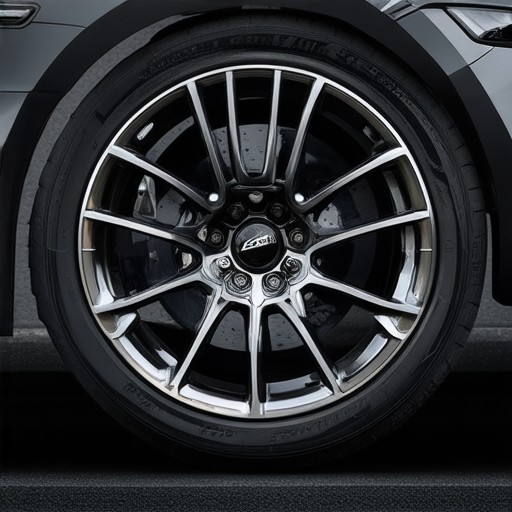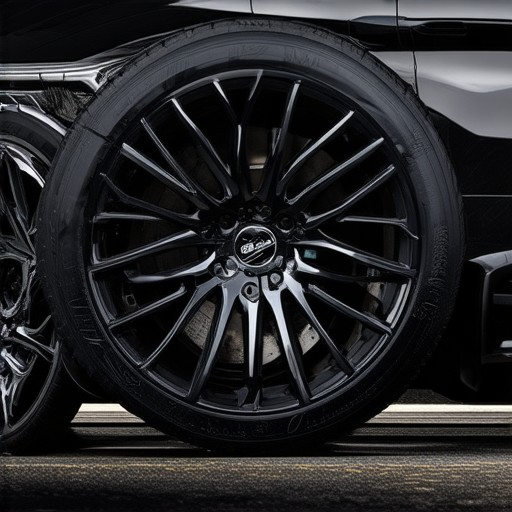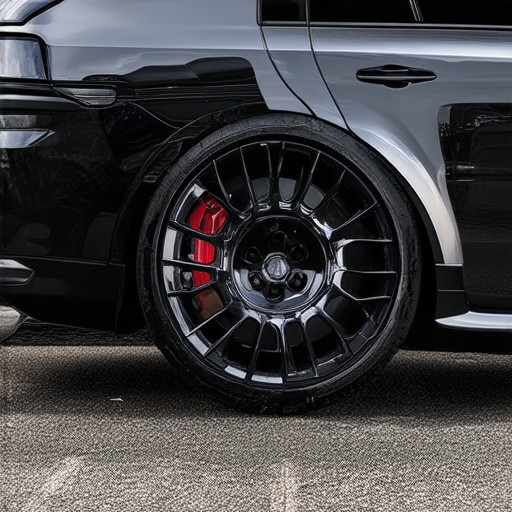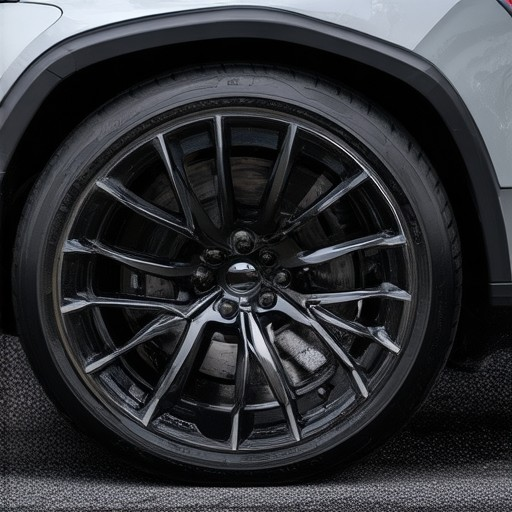Driving through harsh winter conditions can be challenging enough without worrying about whether your vehicle’s performance is optimized for the season. However, one often overlooked aspect of winter preparedness is the selection of rims, which play a crucial role in ensuring traction, stability, and overall handling on snow and icy roads. Whether you’re a daily commuter or an off-road enthusiast, upgrading your vehicle’s components with the right rims for snow and ice can mean the difference between a smooth ride and a risky journey. In this comprehensive guide, we’ll explore everything you need to know about choosing the perfect rims for winter driving, from materials and sizing to the best practices for maintenance and pairing with winter tires. By equipping yourself with the right information, you can enhance your vehicle’s performance and stay safe during the coldest months.
Key Takeaways
– Protect Your Investment: Winter-specific rims safeguard your original wheels and enhance traction on icy roads.
– Boost Performance: Opting for winter rims improves grip and control in snowy conditions.
– Consider Alternatives: All-season tires offer versatility but may not match the performance of dedicated winter tires.
– Evaluate Fitment Needs: Decide if a second set of rims is worth the investment for enhanced durability and safety.
– Choose Wisely for Snow: Select the right size and type of rims, such as studded tires, tailored to your vehicle and driving environment.
– Balance Style and Function: Bigger rims might look good but consider their impact on handling and efficiency.
– Ensure Proper Fitment: Always verify that your rims and tires are compatible for optimal performance and safety.

Best Rims for Snow
When it comes to choosing the best rims for snow, functionality and durability are key. Here’s a breakdown of the top options:
- Steel Wheels : These are highly recommended for winter use due to their strength and resistance to extreme temperatures. Steel rims are less likely to lose air in sub-zero conditions and can withstand impacts better than aluminum.
- Aluminum Rims : While lighter and more stylish, aluminum rims can flex under pressure, leading to potential damage during collisions. They are less ideal for harsh winter conditions compared to steel.
Top Brands for Snow Performance
Incubus Wheels offers excellent options for snow enthusiasts:
- Incubus Pro Series : Designed for tough conditions, these rims provide reliable performance and durability in snow and ice.
- Incubus Black Label Series : A premium choice with advanced features for handling rough terrain and icy roads.
Other reputable brands include:
- Alpinum : Known for their XTR and SRT models, Alpinum rims are built for heavy-duty winter use.
- MudTyme : Offers aggressive off-road designs perfect for snow and mud conditions.
Tips for Maintaining Winter Rims
- Regularly check tire pressure to ensure optimal performance in cold weather.
- Inspect rims for signs of wear and tear after each winter season.
- Consider adding wheel spacers for better clearance in snowy conditions.
For more details on these options, visit our website or explore our blog for expert advice and reviews.
Which Wheel Drive is Best for Snow and Ice?
When evaluating the best wheel drive systems for snow and ice, all-wheel drive (AWD) and four-wheel drive (4WD) are the primary contenders. Each system offers distinct advantages, but for winter driving conditions, all-wheel drive generally provides superior performance.
Advantages of All-Wheel Drive (AWD)
- Improved Traction: AWD distributes power to all four wheels, enhancing grip on icy or snowy surfaces, reducing the risk of skidding.
- Better Weight Distribution: AWD vehicles typically have optimal weight distribution, contributing to stability and control during sharp turns.
- Handling in Various Conditions: AWD systems, particularly full-time versions, continuously deliver power to all wheels, making them more suitable for consistently challenging weather conditions.
Four-Wheel Drive (4WD) Considerations
- Power Delivery: 4WD systems often send more power to the rear wheels, which can be beneficial for pulling heavy loads or navigating steep slopes, though this may not translate to the same level of traction on ice.
- Manual Shifting: Some 4WD systems require manual operation, which can be less ideal in adverse weather conditions compared to the automatic engagement of AWD.
- Primarily for Off-Road Use: While 4WD excels in rugged terrain, it may not offer the same level of performance on ice as AWD systems designed specifically for winter conditions.
Real-World Performance
- Subaru Models: Known for their exceptional grip on ice, Subaru’s AWD vehicles consistently perform well in snowy conditions due to their advanced drivetrain technology.
- Trucks and SUVs with 4WD: Common in regions with harsh winters, these vehicles are often chosen for their towing capacity and off-road capabilities, but may not match the precision of AWD systems in ice scenarios.
Maintenance and Reliability
- Both AWD and 4WD systems require regular maintenance to ensure optimal performance. AWD may necessitate more frequent inspections due to its continuous operation, but this is outweighed by its superior handling benefits.
Conclusion
For snow and ice, all-wheel drive is generally recommended due to its ability to provide consistent traction and improved handling. While four-wheel drive has its strengths, particularly for towing and off-road use, AWD systems are more adept at managing winter driving conditions.

Best Tires for Snow and Ice
When it comes to driving in snow and ice, selecting the right tires is crucial for safety and performance. Here are the top recommendations:
- Winter Tires : These are specifically designed for cold weather conditions. They feature deeper treads and softer rubber compounds that remain flexible in freezing temperatures, providing excellent traction on snow and ice.
- All-Season Tires : While primarily for year-round use, all-season tires can handle light snow and ice effectively. They offer a balance between performance and durability, making them a versatile choice.
- Mud Tires : Though primarily for off-road use, mud tires can also perform well in deep snow. However, they may not be ideal for icy surfaces due to their aggressive tread design.
When choosing between studded and studless tires, consider:
- Studded Tires : Provide exceptional grip on ice through metal studs, though they can wear down the road surface over time.
- Studless Tires : Use carbonyl beads that remain sharp without damaging the road, offering a safer alternative for icy conditions.
For optimal performance in snow and ice, winter tires are highly recommended. Their ability to adapt to extreme cold and provide reliable traction makes them the best choice for drivers facing these challenging conditions.
Learn more about tire selection and performance

Is It Worth Buying Rims for Winter Tires?
Deciding whether to purchase dedicated winter rims for your tires involves considering several factors, including cost, performance, and convenience.
- Pros:
- Protects Original Wheels: Installing winter-specific rims can help preserve your original wheels from potential scratches or damage that occurs during frequent tire changes.
- Improved Performance: Some winter rims are designed with features that enhance traction and handling in snowy or icy conditions.
- Cons:
- Higher Cost: Custom or winter-specific rims can be more expensive than standard rims.
- Maintenance: Winter tires tend to wear out quicker, which means you may need to replace them more frequently.
- Storage Requirements: Storing oversized winter rims can take up significant space if you’re not using them year-round.
Consider alternatives like all-season tires, which offer better versatility but may not provide the same level of performance as dedicated winter tires. Whether you decide to invest in winter-specific rims or opt for all-season tires, ensure they fit your vehicle’s requirements and driving conditions.
Do You Need Another Set of Rims for Winter Tires?
Deciding whether to purchase a separate set of rims for winter tires involves considering several factors:
- Winter Tire Fitment: Winter tires typically require specific rims due to their wider tread and deeper grooves. Using the wrong rims can lead to poor performance and potential damage to your tires.
- Convenience: Swapping between summer and winter tires can be time-consuming. Keeping the same rims year-round eliminates the need for frequent swaps.
- Tire Wear: Winter tires may wear unevenly if not used consistently. This can reduce their lifespan and effectiveness.
- Cost Considerations: Acquiring a second set of rims and winter tires is an upfront expense. However, it may offer long-term savings by reducing wear and improving performance in adverse conditions.
- Driving Conditions: If you frequently encounter snow or ice, the added traction of winter-specific wheels can significantly enhance safety and control.
- Maintenance and Compatibility: Ensure that the chosen rims are compatible with both your current setup and winter tires. Proper fitment is crucial for performance and safety.
Ultimately, the decision hinges on your driving habits and the importance you place on winter traction. For frequent winter use, investing in a second set of rims offers enhanced performance and durability. For less frequent use, compatible alloy wheels may suffice as a cost-effective alternative.

Are Bigger Rims Better for Snow?
When evaluating whether bigger rims are better for snow, several factors come into play:
- Tire Diameter and Depth: Larger diameter rims typically result in deeper treads, which can be beneficial for cutting through snow. However, the ideal size for snow conditions is generally around 8 inches or slightly less.
- Tire Width: While a wider tire may push more snow aside, the optimal width often aligns with the vehicle’s specifications rather than solely focusing on size. Overly wide tires can affect handling and weight distribution.
- Tire Type: Studded tires are commonly recommended for snow, and selecting the correct size for your vehicle’s studs is crucial. Proper sizing ensures maximum traction without causing excessive wear.
- Vehicle Handling and Weight Distribution: The impact of bigger rims on weight distribution and handling varies by vehicle. Some drivers find that a balance between tire size and width offers the best performance.
- Aesthetic and Practical Considerations: While larger rims may enhance appearance, factors like fuel efficiency and handling can be compromised. It’s essential to weigh these trade-offs against performance needs.
The optimal choice for snow conditions often depends on the vehicle’s requirements, the specific snow environment, and individual preferences. Therefore, evaluating both performance and practicality will guide the best decision for your driving situation.




0 Comments